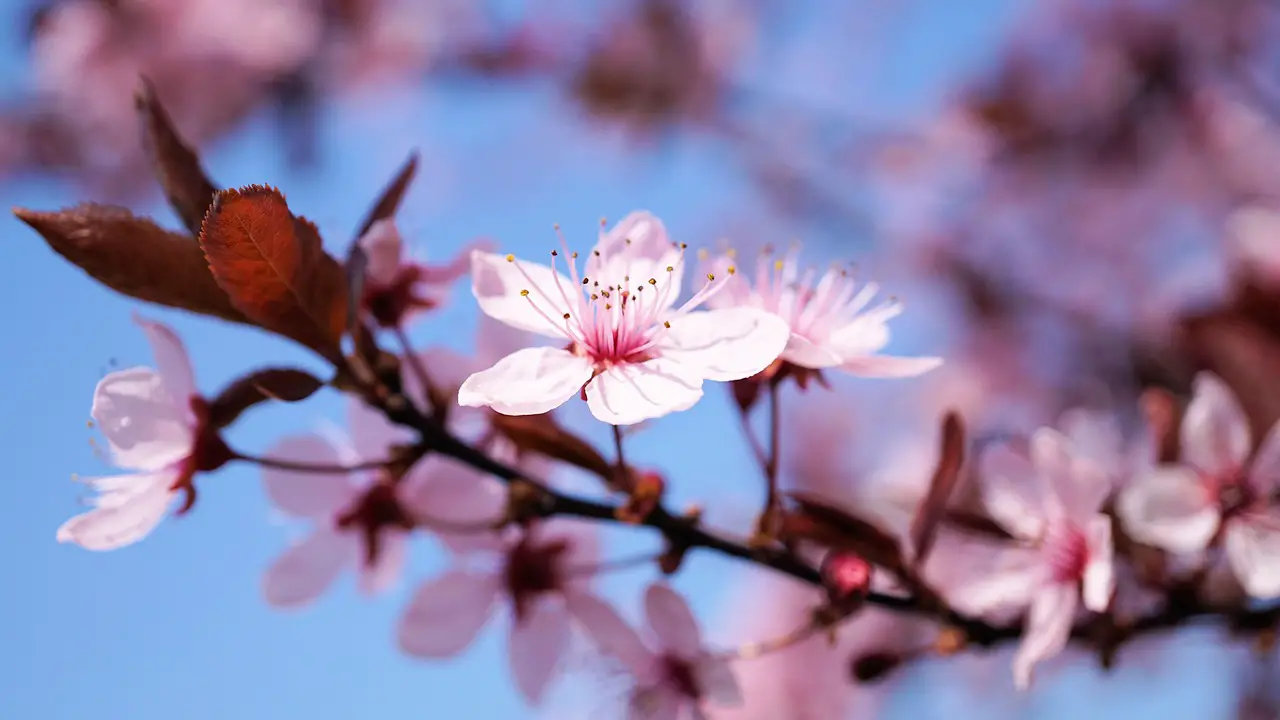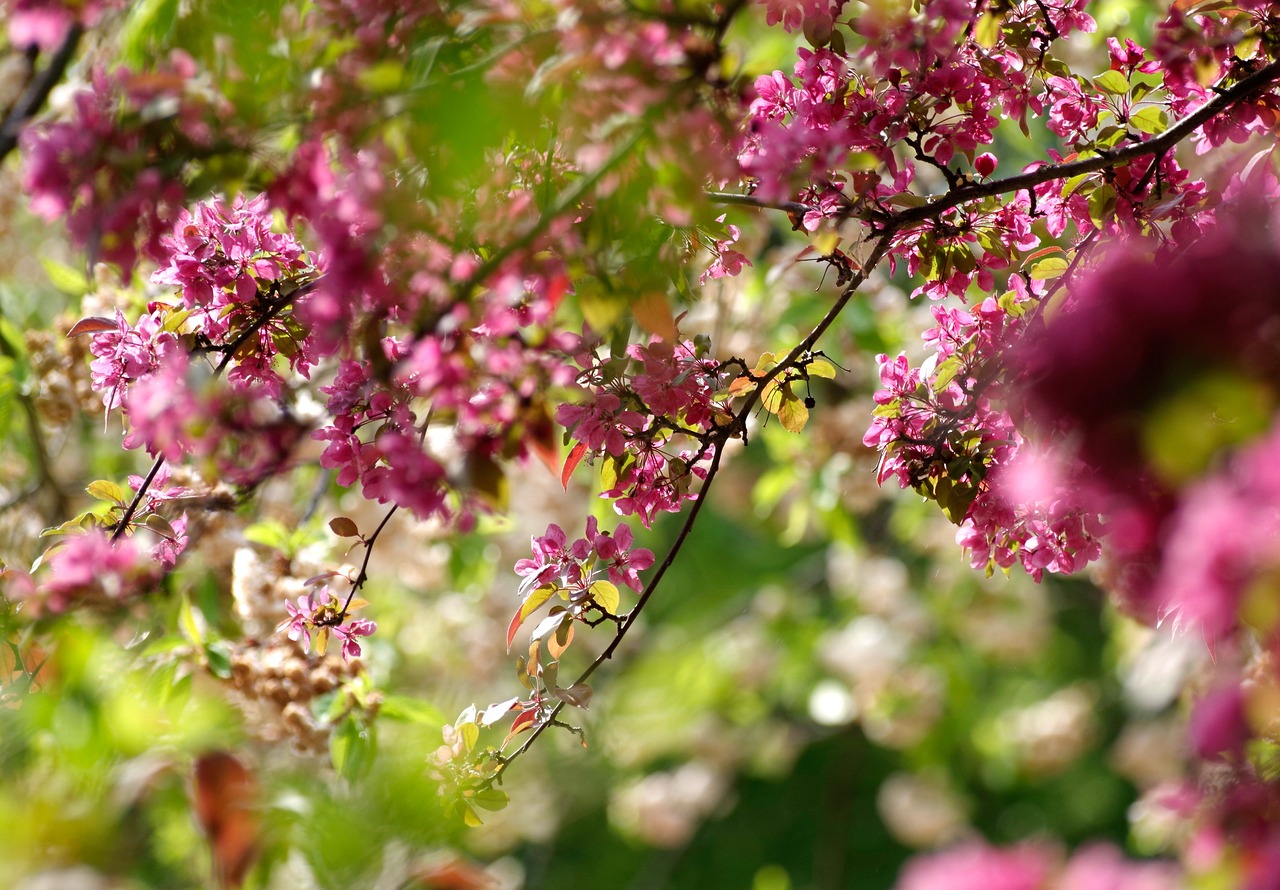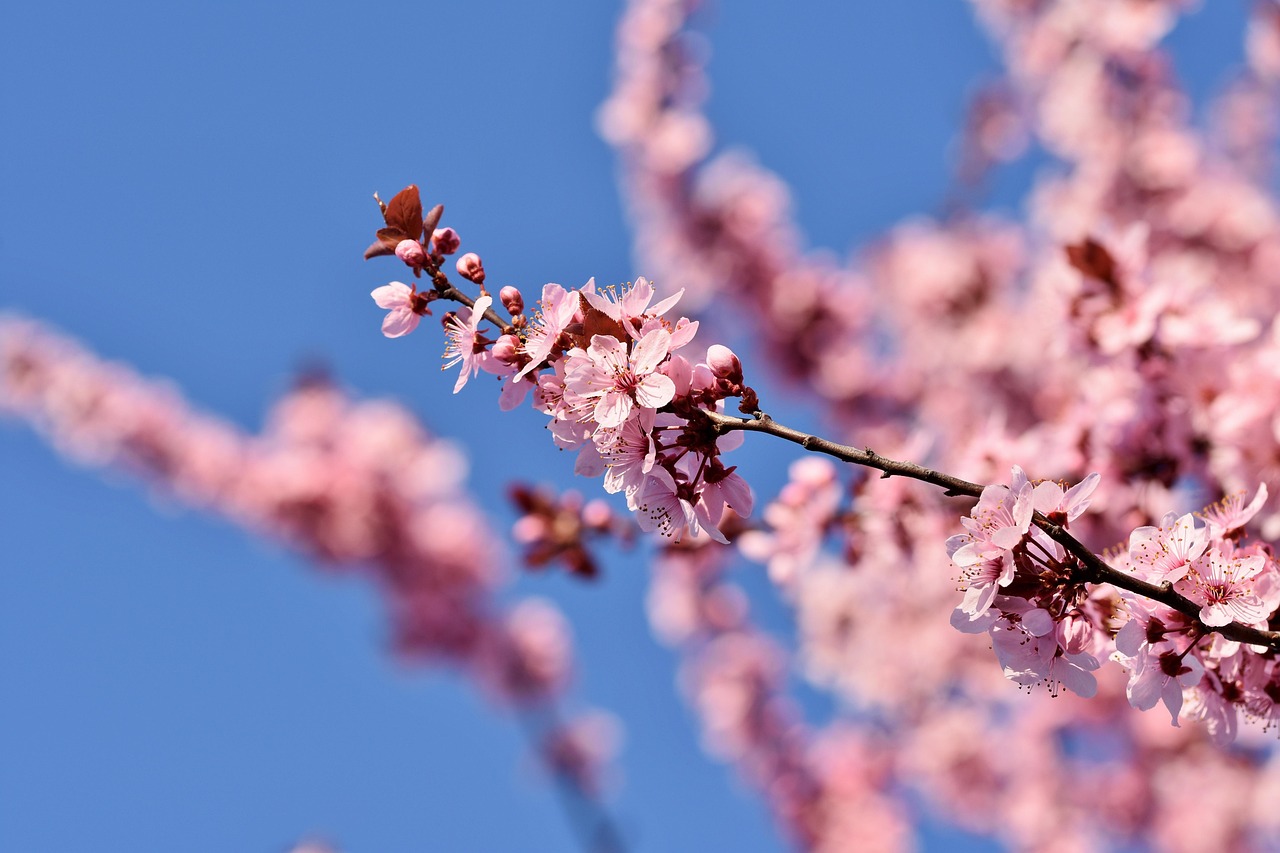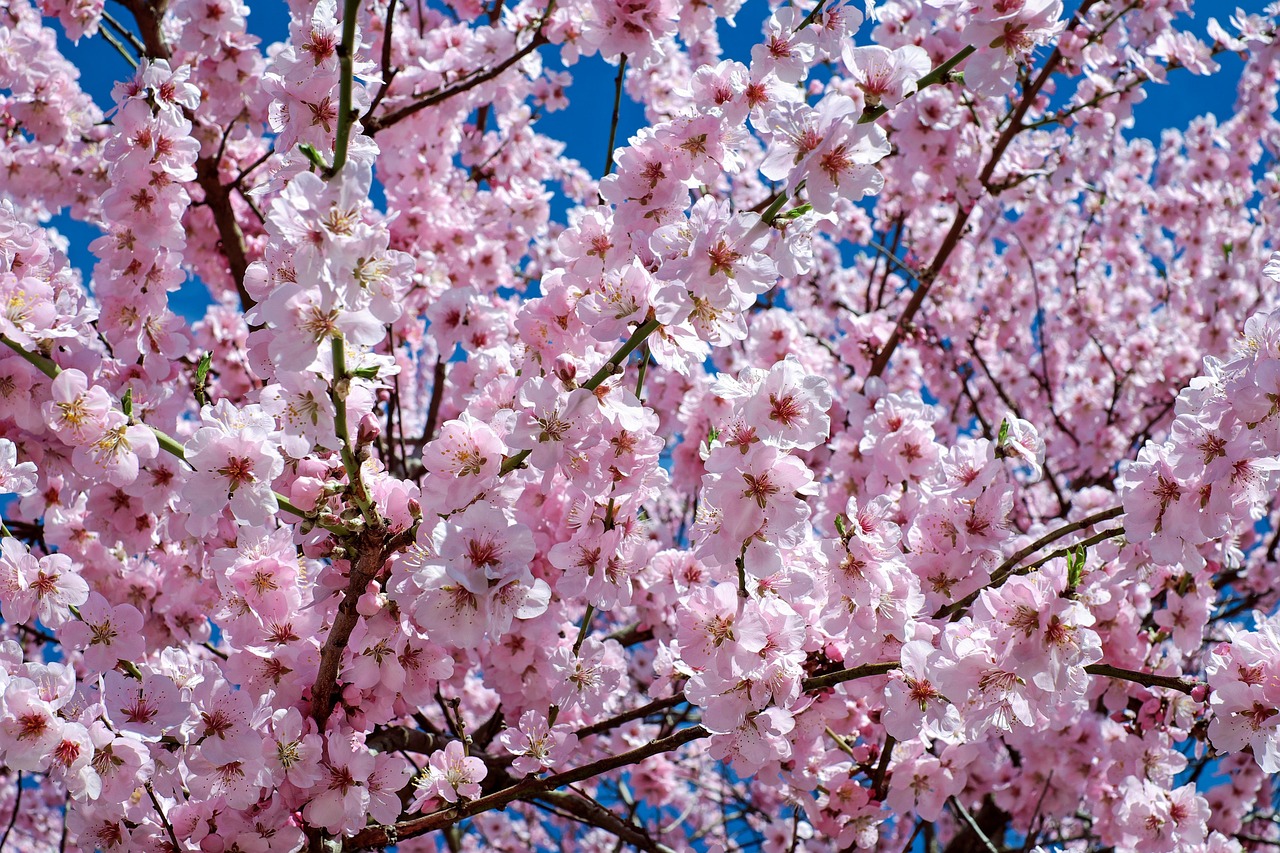A cherry tree pruning diagram illustrates the correct techniques for seasonal care. Proper pruning enhances fruit quality, encourages healthy growth, and maintains the tree’s shape. Understanding the timing and methods of pruning is essential for any cherry tree owner to ensure vibrant and productive trees.
Cherry trees are a popular choice for home gardens due to their beautiful blossoms and delicious fruit. However, caring for these trees requires knowledge and attention, especially when it comes to pruning. Pruning is a vital practice that not only shapes the tree but also promotes healthy growth and maximizes fruit production. Different types of cherry trees, such as sweet and sour varieties, may require slightly different pruning techniques, but the basic principles remain similar.

Seasonal care for cherry trees typically involves two main periods: winter and summer pruning. Winter pruning occurs during dormancy, while summer pruning focuses on maintaining the shape and health of the tree. Both practices can significantly improve the overall vitality of the tree, but they must be executed correctly to avoid damage.
Understanding Cherry Tree Pruning
Pruning involves the removal of specific branches and foliage to enhance the tree’s growth and productivity. Here are some key reasons why pruning is essential:
- Encourages Air Circulation: Pruning opens up the canopy, allowing better airflow. This reduces the risk of fungal diseases.
- Improves Sunlight Penetration: Removing excess branches ensures that sunlight reaches all parts of the tree, promoting even growth.
- Enhances Fruit Quality: Proper pruning leads to larger and more flavorful cherries by directing energy to fewer fruiting branches.
- Maintains Shape: Regular pruning helps maintain a balanced structure, making it easier to manage the tree as it matures.
The timing of pruning is crucial. Pruning too late in the season can harm the developing buds, while pruning too early may expose vulnerable areas to harsh winter conditions. Thus, understanding the right time for each type of pruning is essential for success.

Pruning Techniques
There are several techniques used in cherry tree pruning that every gardener should be familiar with:
- Crown Thinning: This involves removing some of the inner branches to increase light penetration and airflow.
- Crown Raising: Removing lower branches allows for easier access underneath the tree and encourages upward growth.
- Crown Reduction: This technique reduces the overall height of the tree by cutting back upper branches.
- Heading Back: Shortening long branches encourages new growth from side buds.
Each technique serves a unique purpose and should be applied based on the specific needs of the tree and its growth stage. Understanding how and when to apply these techniques will help in achieving a healthy cherry tree.
The Role of Seasonal Care
Seasonal care for cherry trees involves more than just pruning. It includes monitoring for pests, ensuring adequate water supply, and providing necessary nutrients. Each season presents unique challenges and opportunities for care:

| Season | Care Activities |
|---|---|
| Spring | Monitor flower buds, apply fertilizer, and begin light pruning if necessary. |
| Summer | Conduct summer pruning to shape the tree and remove any dead or diseased wood. |
| Fall | Prepare for winter by mulching around the base and monitoring for pests. |
| Winter | Perform major pruning while the tree is dormant and check for any structural issues. |
In addition to these activities, it’s important to regularly check for signs of disease or pest infestations throughout the seasons. Early detection can save a tree from severe damage or loss.
Caring for cherry trees through proper seasonal care and pruning not only enhances their beauty but also boosts their productivity. By understanding these practices, gardeners can enjoy a bountiful harvest year after year while maintaining healthy trees.
The journey of cherry tree care begins with knowledge. As you gain experience in pruning techniques and seasonal maintenance, you will see your efforts reflected in the health and vitality of your cherry trees. The use of diagrams can further aid in visualizing these practices, making it easier to implement them effectively.

Tools and Equipment for Pruning Cherry Trees
Having the right tools is essential for effective cherry tree pruning. The quality of your tools can significantly impact the health of the tree and the effectiveness of your pruning efforts. Here are some essential tools that every cherry tree caretaker should consider:
- Hand Pruners: These are ideal for cutting small branches and making precise cuts. Choose a pair with sharp, clean blades for better results.
- Loppers: For thicker branches, loppers provide extra leverage. They are useful for reaching higher areas without climbing the tree.
- Saw: A pruning saw is necessary for cutting larger branches that cannot be handled by hand pruners or loppers.
- Gloves: Protective gloves help prevent injuries from thorny branches and reduce fatigue during prolonged use.
- Safety Glasses: Wearing safety glasses protects your eyes from debris while pruning.
Investing in high-quality tools will not only improve your efficiency but also ensure clean cuts. Clean cuts are crucial for preventing disease and promoting faster healing.
Understanding Cherry Tree Growth Stages
Understanding the growth stages of cherry trees is vital for effective pruning and care. Cherry trees typically go through several stages from planting to maturity, each requiring different care techniques.
| Growth Stage | Characteristics | Care Recommendations |
|---|---|---|
| Young Tree (1-3 Years) | Developing root system and branches; focus on establishing a strong framework. | Light pruning to shape the tree; remove any competing branches. |
| Mature Tree (4-10 Years) | Full canopy development; begins to produce fruit. | Regular pruning to maintain shape and health; thinning out excess branches. |
| Established Tree (10+ Years) | Fruit production stabilizes; may require more maintenance. | Major pruning to rejuvenate growth; focus on removing dead or diseased wood. |
By recognizing these stages, you can tailor your pruning approach to suit the specific needs of your cherry tree at any point in its life cycle. This understanding will enhance your ability to foster healthy growth and maximize fruit yield.
Common Mistakes in Pruning Cherry Trees
Even experienced gardeners can make mistakes when pruning cherry trees. Avoiding these common pitfalls will help ensure that your trees remain healthy and productive:
- Pruning at the Wrong Time: Pruning too early or late can damage buds and reduce fruit production.
- Over-Pruning: Removing too many branches can stress the tree and hinder its growth.
- Ignoring Tree Shape: Failing to maintain a proper shape can lead to poor airflow and sunlight penetration.
- Using Dull Tools: Dull tools can tear branches instead of making clean cuts, which increases the risk of disease.
- Neglecting Safety: Not using protective gear can lead to injuries during pruning activities.
Avoiding these mistakes will not only help you maintain healthier trees but will also increase your confidence as a gardener. Continuous learning and practice will refine your techniques over time.
Pest and Disease Management During Pruning
Pest and disease management is a crucial aspect of cherry tree care, especially during the pruning process. Addressing these issues early can help prevent them from spreading and causing significant damage. Here are some common pests and diseases to watch for:
- Cherry Fruit Fly: These insects can infest cherries, causing them to rot. Monitoring for signs of infestation is key.
- Bacterial Canker: This disease causes dark lesions on branches. Prune away affected areas immediately to prevent spread.
- Powdery Mildew: A fungal disease that appears as a white powder on leaves. Ensure good airflow by proper pruning to combat this issue.
- Aphids: These small insects can weaken trees by sucking sap. They can be managed with insecticidal soap if necessary.
Regularly inspecting your cherry trees for these problems, especially after pruning, will help you maintain their health. Implementing integrated pest management strategies will reduce the need for chemical treatments while promoting a balanced ecosystem in your garden.
Incorporating pest management practices into your seasonal care routine will ensure that your cherry trees thrive and produce an abundant harvest year after year. As you become more familiar with your trees, you will develop a keen eye for early signs of trouble, allowing you to act swiftly and effectively.
Creating a Cherry Tree Pruning Diagram
A cherry tree pruning diagram is an invaluable tool for visual learners and those new to gardening. Such a diagram helps clarify where and how to make cuts, ensuring that pruning is done effectively. Here’s how to create a detailed pruning diagram for your cherry tree.
Essential Elements of a Pruning Diagram
When creating a pruning diagram for cherry trees, include the following elements:
- Tree Structure: Draw the basic shape of the tree, including the trunk, main branches, and canopy.
- Label Branches: Identify the main branches, lateral branches, and any competing leaders that may need to be pruned.
- Cutting Points: Mark where cuts should be made, specifying whether they are for thinning, heading back, or removing dead wood.
- Seasonal Notes: Include seasonal notes indicating the best times for each type of pruning.
Using color coding can also enhance your diagram. For instance, use green for healthy branches, red for branches that need removal, and yellow for areas requiring caution. This visual differentiation makes it easier to understand the entire pruning process.
Steps to Create Your Diagram
Follow these steps to create an effective cherry tree pruning diagram:
- Sketch the Tree: Begin with a basic sketch of your cherry tree, accurately representing its size and shape.
- Identify Key Areas: Highlight areas such as the trunk, main branches, lateral branches, and any dead or diseased wood.
- Indicate Cuts: Use arrows or lines to show where cuts should be made. Specify types of cuts (thinning or heading) near each marked area.
- Add Seasonal Information: Note the best times for pruning each section based on the growth stage of the tree.
- Review and Adjust: After completing your diagram, review it for clarity. Make adjustments as needed to ensure all essential information is included.
A well-structured pruning diagram serves as a reference guide during the actual pruning process. It can also be a helpful educational tool for others interested in learning about cherry tree care.
Best Practices for Pruning Cherry Trees
Implementing best practices during pruning will enhance the health and productivity of your cherry trees. Here are several recommendations to keep in mind:
- Prune During Dormancy: The best time to perform major pruning is during winter while the tree is dormant. This minimizes stress and encourages robust growth in spring.
- Make Clean Cuts: Always use sharp tools to ensure clean cuts. This helps prevent injury to the tree and reduces the risk of disease.
- Avoid Topping: Topping—cutting off the top of the tree—can lead to numerous problems including weak growth and increased susceptibility to diseases.
- Step Back Often: Periodically step back and observe the tree from a distance as you prune. This allows you to maintain a balanced shape.
- Limit Pruning per Session: Avoid over-pruning in one session. A good rule of thumb is to remove no more than 25% of the tree’s canopy at once.
Understanding Different Cherry Tree Varieties
Different varieties of cherry trees may have unique growth habits and pruning needs. Familiarizing yourself with these differences can improve your pruning outcomes. Here are some common varieties:
| Cherry Tree Variety | Description | Pruning Recommendations |
|---|---|---|
| Sour Cherry | Tart fruit, great for pies and preserves; generally hardier than sweet cherries. | Light pruning to maintain shape; focus on removing suckers and dead wood. |
| Sweet Cherry | Sweeter taste; often more susceptible to diseases than sour cherries. | More frequent thinning required; aim for an open center to allow light penetration. |
| Bing Cherry | A popular sweet variety known for its large, dark fruit. | Moderate pruning; maintain strong scaffold branches to support heavy fruit loads. |
| Rainier Cherry | A yellow-red variety known for its sweetness and firmness. | Easier to manage with minimal pruning; focus on maintaining a balanced shape. |
Knowing the characteristics and recommendations for each variety will help you tailor your care regimen effectively, ensuring that your cherry trees thrive in their specific environment.
The Impact of Weather on Pruning Timing
Weather conditions play a significant role in determining the appropriate timing and method for pruning cherry trees. Extreme weather can affect tree health and growth patterns. Here are some considerations regarding weather:
- Dormant Season: Mild winters are ideal for pruning as they minimize stress on the tree. However, avoid pruning before severe cold snaps.
- Summer Heat: Pruning during hot weather can stress the tree. If summer pruning is necessary, do it early in the morning or late afternoon when temperatures are cooler.
- Post-Rain Conditions: Prune when conditions are dry to prevent fungal infections that thrive in wet environments.
By adapting your pruning schedule according to weather conditions, you can protect your cherry trees from unnecessary stress and disease, ensuring they remain healthy and productive throughout the seasons.
Maintaining Cherry Tree Health Post-Pruning
After pruning your cherry trees, it is crucial to implement practices that will help maintain their health and promote recovery. Proper aftercare can significantly enhance the benefits of pruning. Here are some strategies to ensure your cherry trees thrive following a pruning session:
- Watering: Ensure that your cherry trees receive adequate water after pruning, especially if the weather is dry. This helps alleviate stress and supports new growth.
- Mulching: Apply a layer of mulch around the base of the tree to retain moisture, suppress weeds, and regulate soil temperature. Organic mulches, such as wood chips or shredded bark, are ideal.
- Fertilization: Consider applying a balanced fertilizer after pruning to provide essential nutrients. This can help stimulate new growth and fruit development.
- Pest Monitoring: Keep a close eye on your trees for any signs of pests or diseases. Early detection is key to preventing outbreaks that can damage your trees.
Implementing these care practices will help support your cherry trees in recovering from pruning and set the stage for a healthy growing season. A well-cared-for tree is more resilient against environmental stressors and will produce better fruit yields.
Utilizing Technology for Better Pruning Practices
In today’s world, technology can enhance gardening practices, including cherry tree pruning. There are several tools and resources available that can help you manage your trees more effectively:
- Mobile Apps: Various gardening apps can assist with tree care reminders, pest identification, and seasonal care tips tailored to your specific region.
- Online Communities: Joining gardening forums or social media groups can provide access to shared experiences and advice from other cherry tree enthusiasts.
- Video Tutorials: Many online platforms offer video tutorials on proper pruning techniques, which can be valuable for visual learners.
- Drones and Photography: Using drones or aerial photography can help assess the health of your trees from above, identifying areas that may need additional attention.
By leveraging these technological advancements, you can enhance your knowledge, skills, and efficiency in caring for cherry trees. Being informed and connected with a community can lead to better outcomes for your garden.
Understanding Local Conditions for Optimal Care
Every gardener should be aware of their local climate and soil conditions when caring for cherry trees. These factors can greatly influence how you prune and care for your trees:
- Soil Type: Test your soil to determine its pH and nutrient levels. Cherry trees prefer well-draining soil with a pH between 6.0 and 7.0.
- Climate Zone: Know your USDA hardiness zone. This will help you understand which cherry varieties are best suited for your area and when they will bloom.
- Pest Presence: Research common pests in your region. Understanding local pest pressures can inform your pest management strategies throughout the year.
Tuning into the specifics of your local environment allows you to tailor your pruning and maintenance practices more effectively. It ensures that your cherry trees are best suited to thrive in their given conditions.
Final Thoughts
Caring for cherry trees through proper seasonal care and pruning is a rewarding endeavor that requires knowledge, technique, and patience. Understanding the importance of timing, the right tools, and best practices lays the foundation for successful tree management. With proper pruning techniques, regular maintenance, and attention to local conditions, you can enjoy healthy cherry trees that yield bountiful fruit year after year.
The creation of a pruning diagram serves as an excellent reference tool, providing clarity during the pruning process. It ensures that you stay focused on your objectives while adapting to the unique needs of each tree. As you gain experience in managing your cherry trees, remember that every season offers new opportunities for growth and improvement.
By integrating technology, understanding local conditions, and maintaining diligent care post-pruning, you will cultivate vibrant cherry trees that not only beautify your landscape but also provide delicious fruit for you and your family to enjoy. Embrace the journey of cherry tree care, knowing that each effort contributes to their long-term success and vitality.
